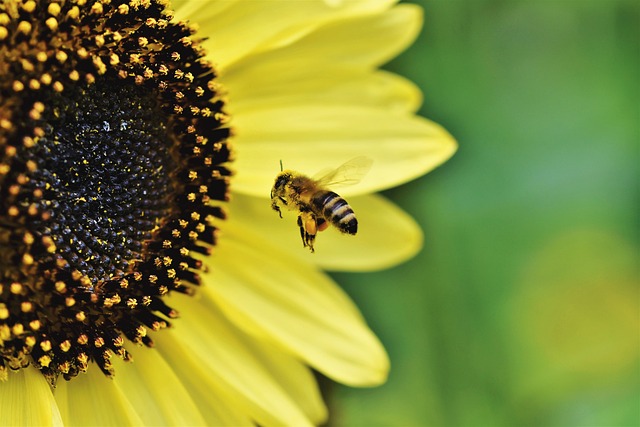Psocids (book lice) thrive in humid, organic environments, causing significant damage in homes and businesses if left unchecked. To prevent and manage these persistent pests, it's crucial to maintain a dry environment, conduct regular inspections, and engage professional professional psocid removal services. This involves assessing entry points, addressing moisture issues, and implementing tailored prevention plans focusing on sanitation, sealing gaps, and IPM techniques. Consistent monitoring is key to long-term control through professional psocid removal, ensuring pest-free spaces in both residential and commercial settings.
Psocids, also known as book lice, can infiltrate homes and businesses, causing damage and discomfort. To effectively prevent these persistent pests, it’s essential to understand their behavior and habitat. This article guides you through a comprehensive approach to psocid prevention, from assessing your environment to implementing tailored strategies for professional psocid removal. By following these steps, you can secure long-term protection against these pesky insects.
Understanding Psocids: Behavior and Habitat
Psocids, also known as book lice, are tiny insects that can become a significant pest in both residential and commercial settings. Understanding their behavior and habitat is crucial for effective long-term prevention strategies. These insects thrive in environments with high humidity and access to organic materials, making them common in areas like libraries, museums, and historical sites where paper items and books are abundant. Their tiny size allows them to hide in narrow spaces, making professional psocid removal a delicate process that requires specialized equipment and expertise.
Psocids have a short lifespan, but their rapid reproduction can lead to an infestation if left unchecked. They feed on starchy materials, including paper, fabric, and even artifacts made from plant-based materials. Given their preference for dark, secluded areas, they often go unnoticed until the population grows substantial enough to cause visible damage. To prevent psocid infestations, it is essential to maintain a clean and dry environment, regularly inspect vulnerable areas, and address any signs of an existing infestation promptly with the help of professional pest control services specializing in psocid removal.
Assessing Your Environment for Effective Prevention
When developing a long-term prevention plan for psocids, assessing your environment is a critical first step. Professionals in psocid removal recommend thoroughly inspecting your space to identify potential entry points and sources of food or moisture that might attract these pests. This includes checking for cracks, gaps, or crevices where psocids could hide or enter from the outside.
Paying attention to areas like windowsills, doors, and vents is crucial, as these are common routes for psocid intrusion. Additionally, examining your property for any water leaks, standing water, or high humidity levels can help eliminate conditions that foster psocid breeding. Addressing these environmental factors early on significantly contributes to an effective prevention strategy, ensuring a professional psocid removal approach tailored to your specific needs.
Developing a Comprehensive Customized Plan
Developing a comprehensive customized plan for long-term psocid prevention is essential for maintaining a pest-free environment, especially in commercial spaces where professional psocid removal services are frequently required. This strategy involves a multi-faceted approach tailored to the specific needs and conditions of each facility. It starts with a thorough inspection and evaluation by trained professionals who identify potential entry points, habitats, and sources of food or moisture that may attract psocids.
Once these factors are mapped out, a targeted plan is created, incorporating measures like sealing gaps, improving sanitation, and implementing integrated pest management (IPM) techniques. Regular monitoring and maintenance checks are crucial components to ensure the effectiveness of the plan. By combining these strategies, facilities can prevent psocid infestations from recurring, ultimately saving time, resources, and the hassle of repeated professional psocid removal interventions.
Implementing and Monitoring the Prevention Strategy
Implementing a customized prevention strategy for long-term control of psocids requires a dedicated and systematic approach. It involves several steps, beginning with meticulous inspection to identify potential entry points or existing infestations. Once identified, professionals can seal cracks, gaps, and other access points to prevent the pests from entering. Regular cleaning routines are essential; this includes thorough vacuuming, wiping surfaces, and removing clutter to eliminate potential hiding spots.
Monitoring is a crucial aspect of successful psocid prevention. Trained professionals should regularly inspect areas prone to infestations, using tools like magnifying glasses and specialized equipment to detect even the tiniest signs of activity. This proactive approach ensures that any new infestation is caught early, making it easier and more cost-effective to address. Remember, consistent implementation and close monitoring are key to achieving and maintaining a psocid-free environment through professional psocid removal services.
In conclusion, effective long-term prevention of psocids requires a tailored approach. By understanding these pests’ behavior and habitat, assessing your environment, developing a comprehensive plan, and implementing a strategic monitoring system, you can achieve successful professional psocid removal. This multi-step process ensures that your space remains free from psocids, providing a peaceful and hygienic living or working environment.
